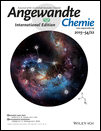Graft-Copolymer-Based Approach to Clear, Durable, and Anti-Smudge Polyurethane Coatings†
We gratefully acknowledge the Lorama Group, the Ontario Center of Excellence, and the Collaborative Research and Development Program of the Natural Sciences and Engineering Research Council of Canada (NSERC) for sponsoring this research. G.L. thanks the Canada Research Chairs program for a Tier I Canada Research Chair position in Materials Science. We also thank Prof. Mitchell A. Winnik and Dr. Ian Wyman for proof-reading the manuscript.
Graphical Abstract
No more smudges: A graft-copolymer-based approach was used to prepare clear polyurethane coatings that repel water, diiodomethane, hexadecane, ink, and an artificial fingerprint liquid. Different coating methods can be used to apply the coatings to different surfaces, which can thus be protected from fingerprints, stains, and graffiti.
Abstract
Clear anti-smudge coatings with a thickness of up to tens of micrometers have been prepared through a graft-copolymer-based approach from commercial precursors. The coatings repel water, diiodomethane, hexadecane, ink, and an artificial fingerprint liquid. In addition, they can be readily applied onto different substrates using different coating methods. These coatings could find applications in protecting hand-held electronic devices from fingerprints, windows from stains, and buildings from graffiti.





